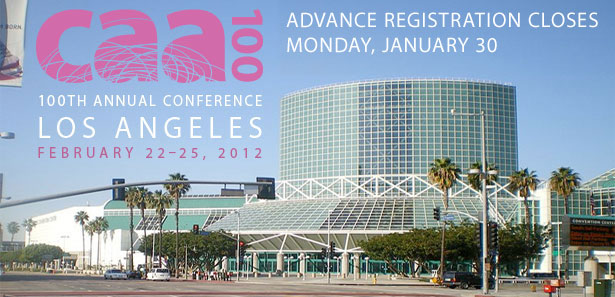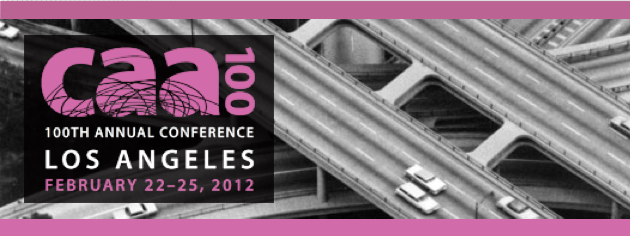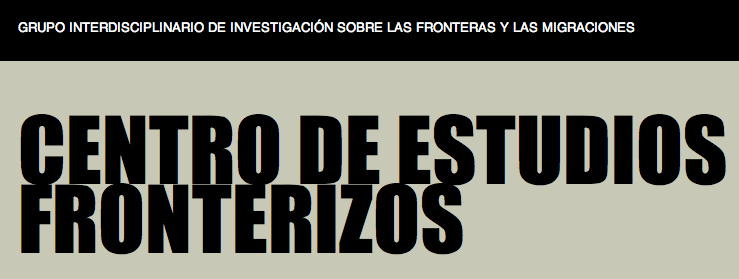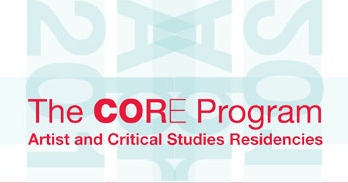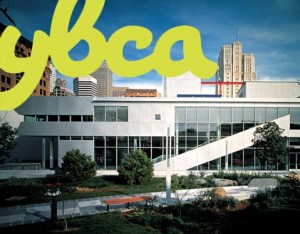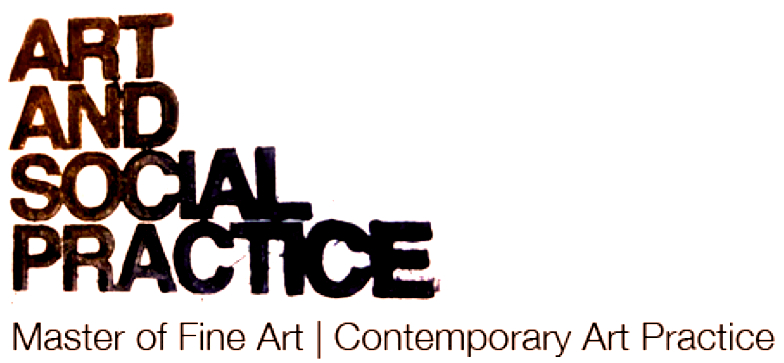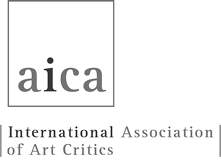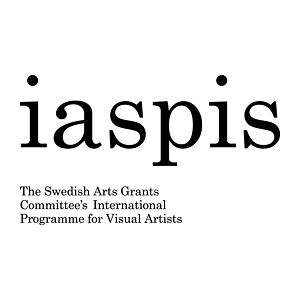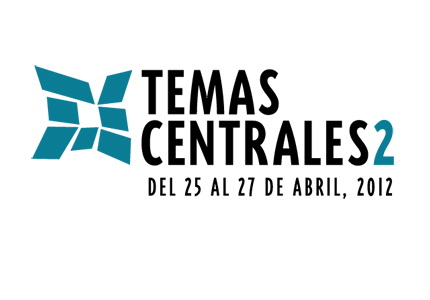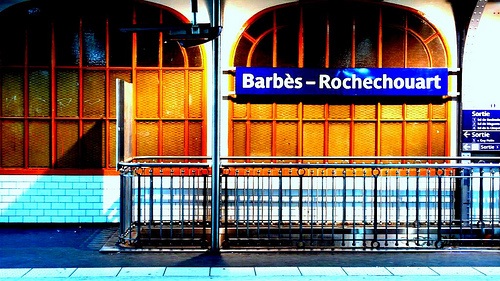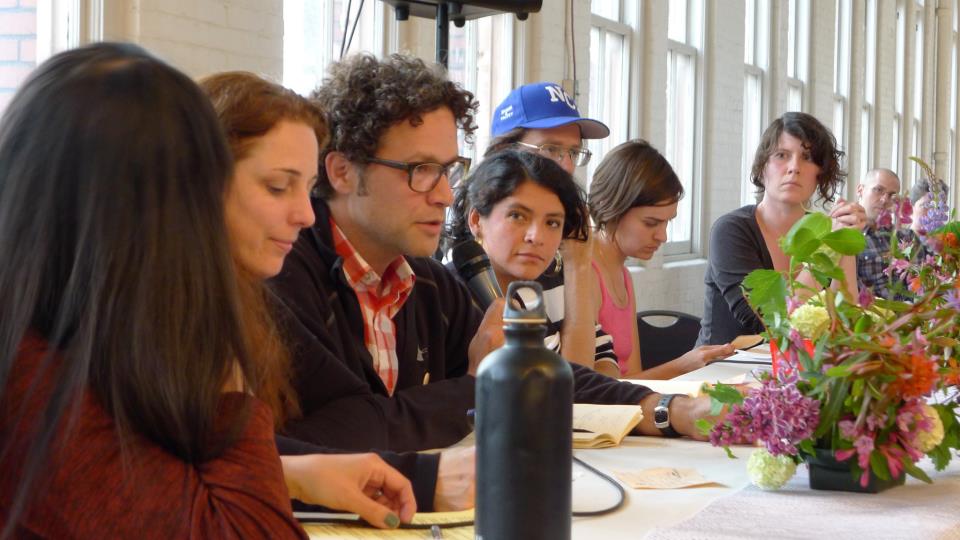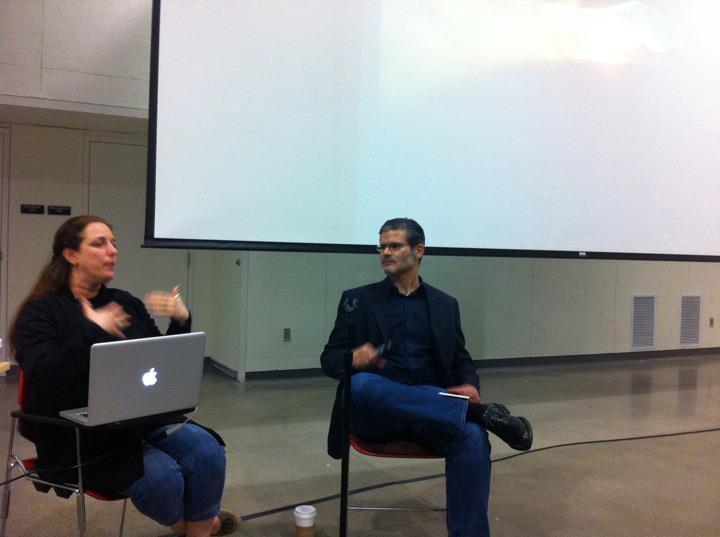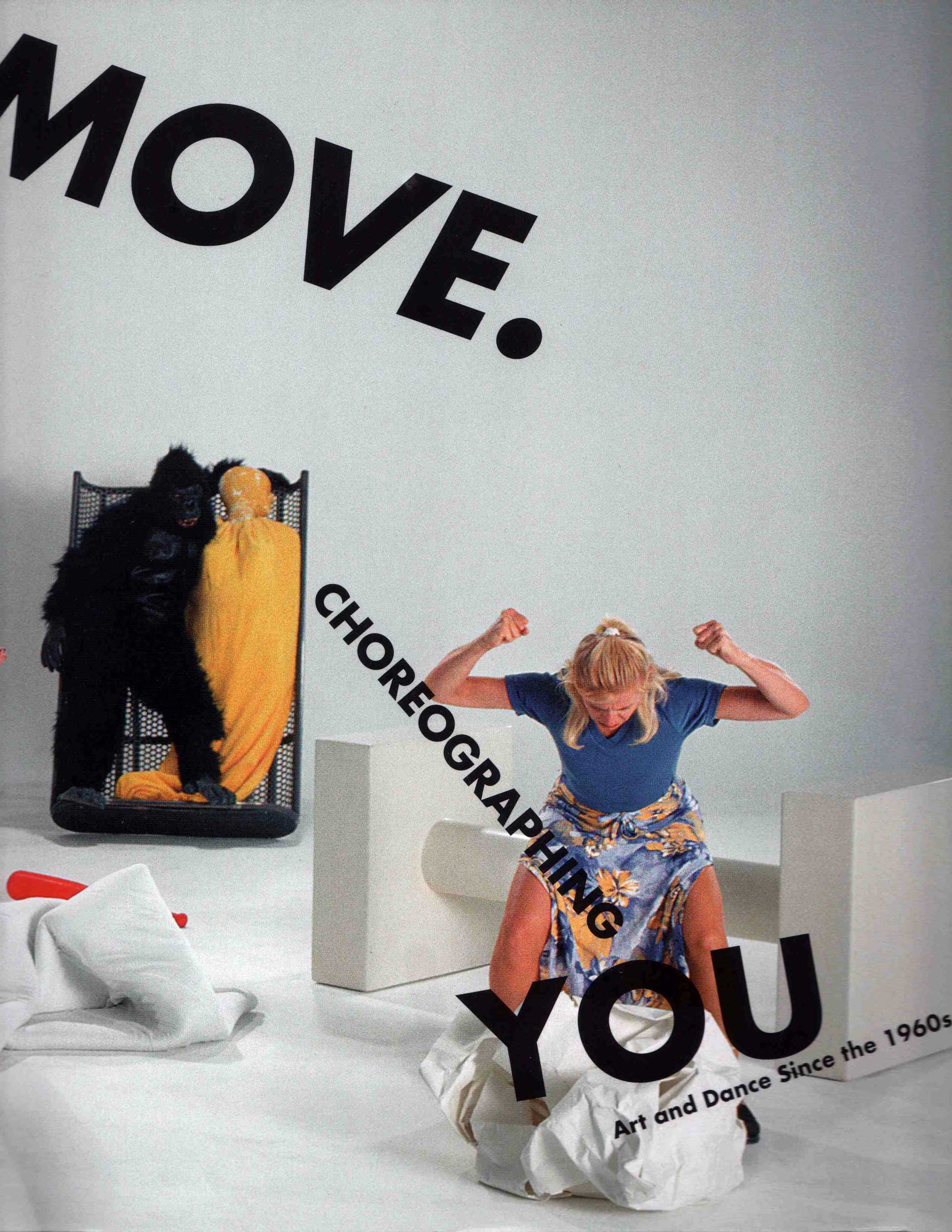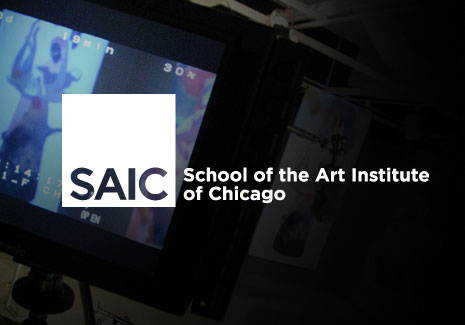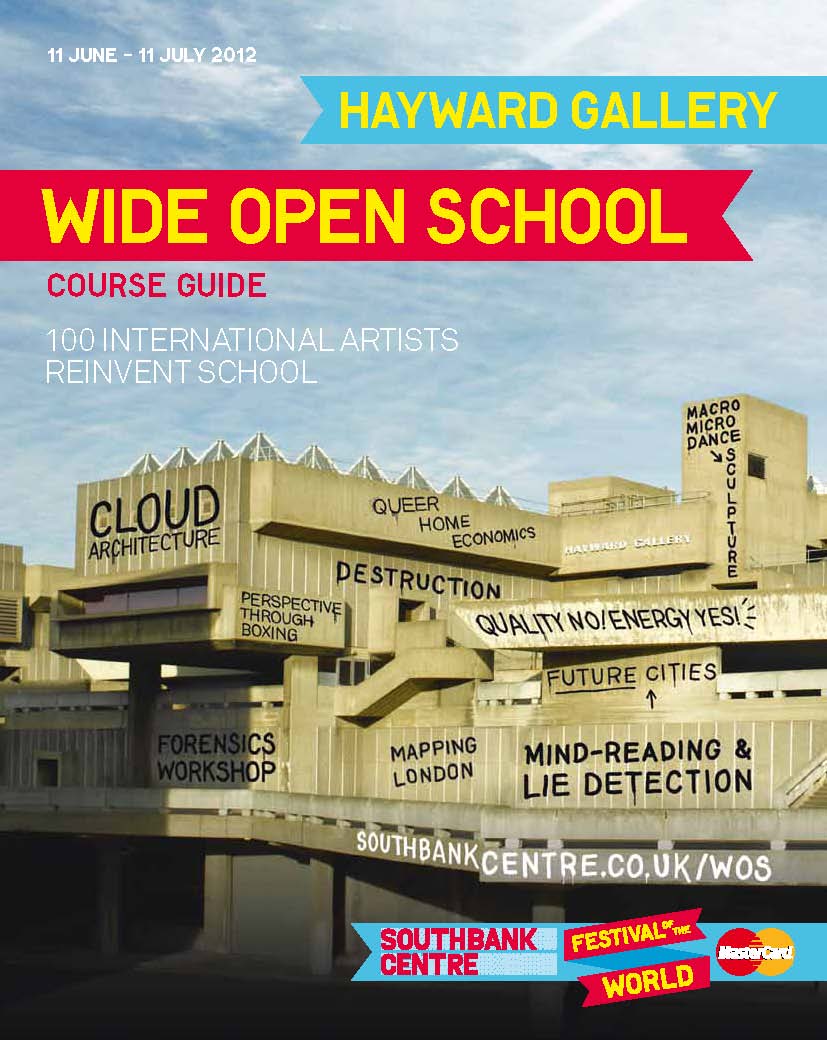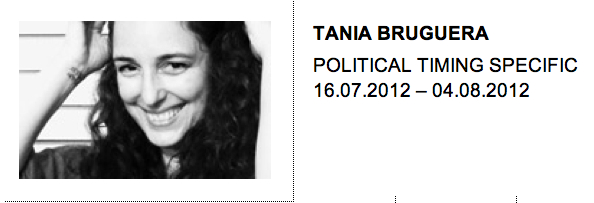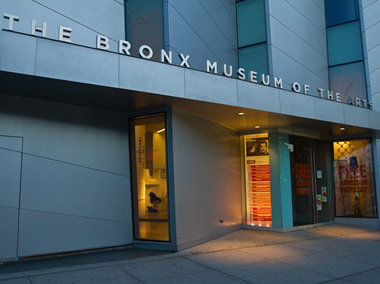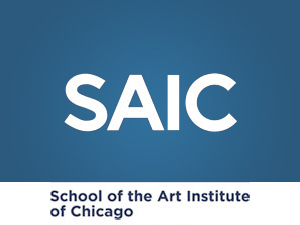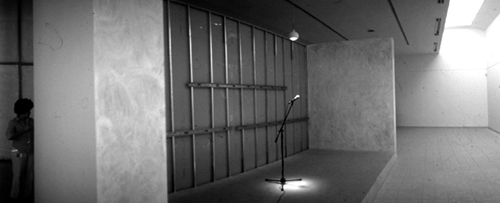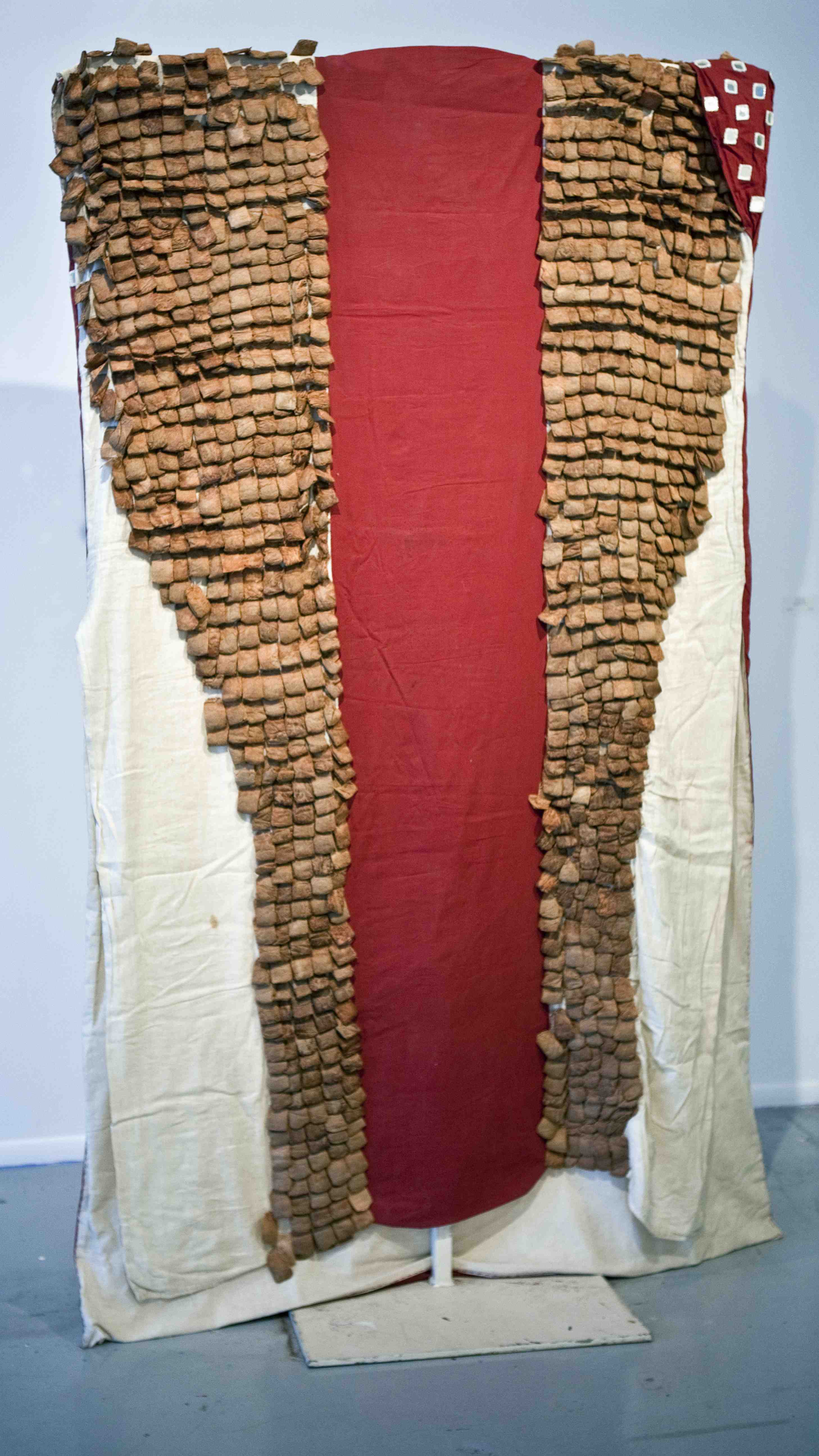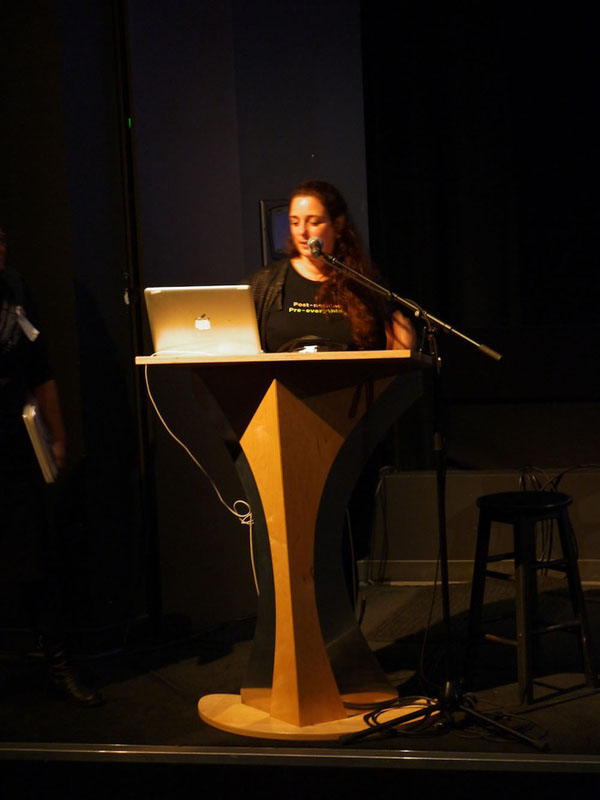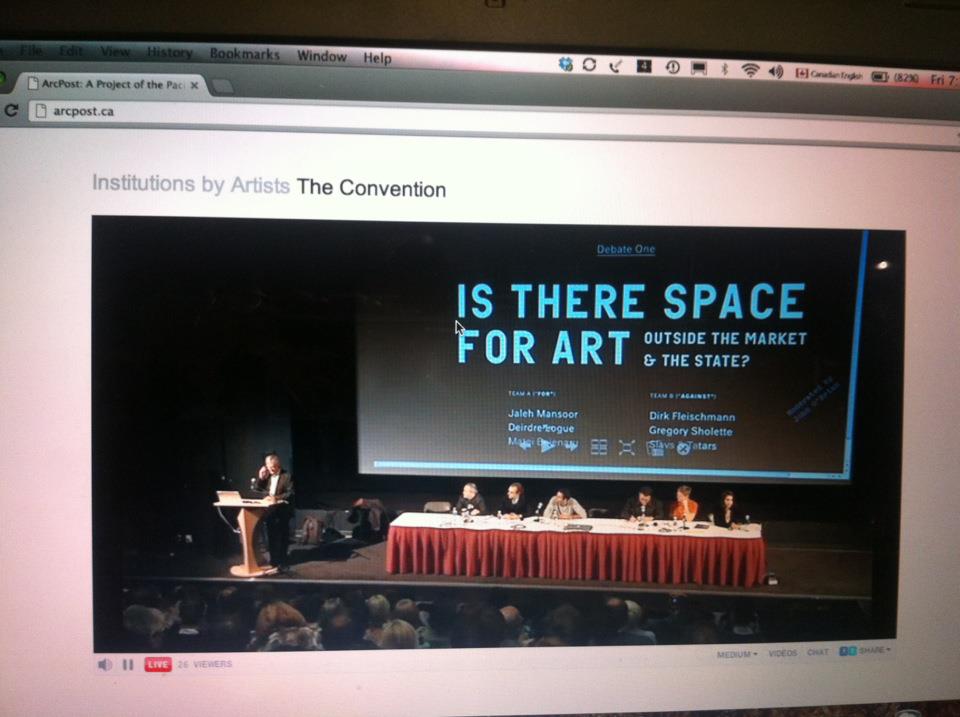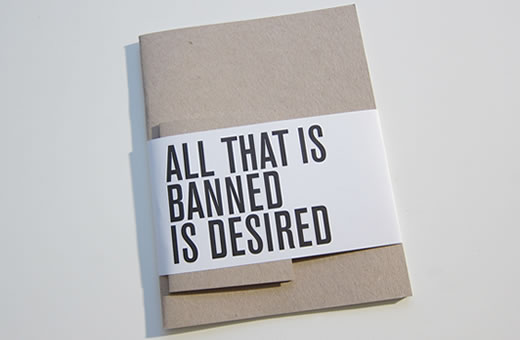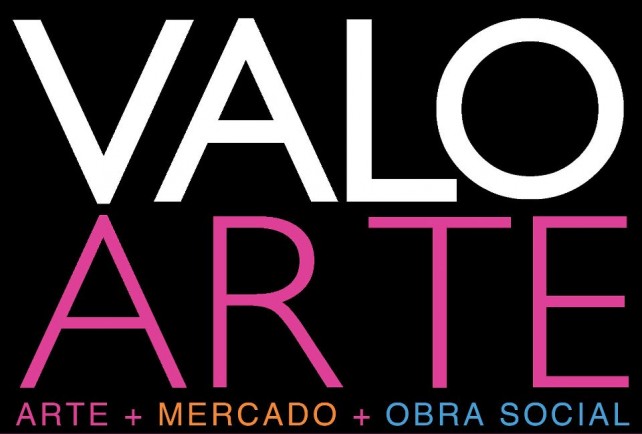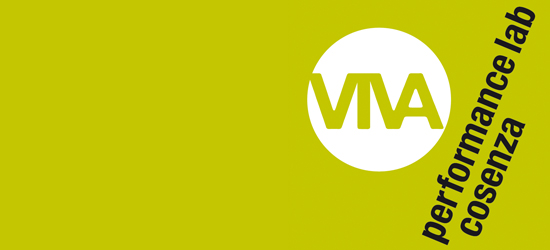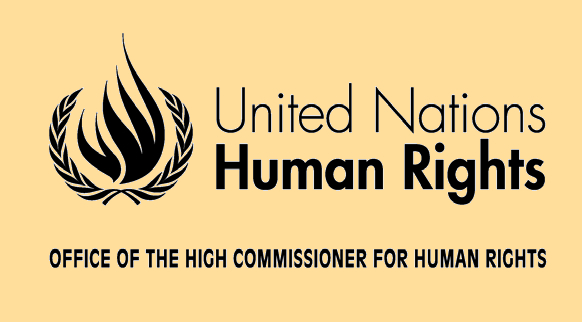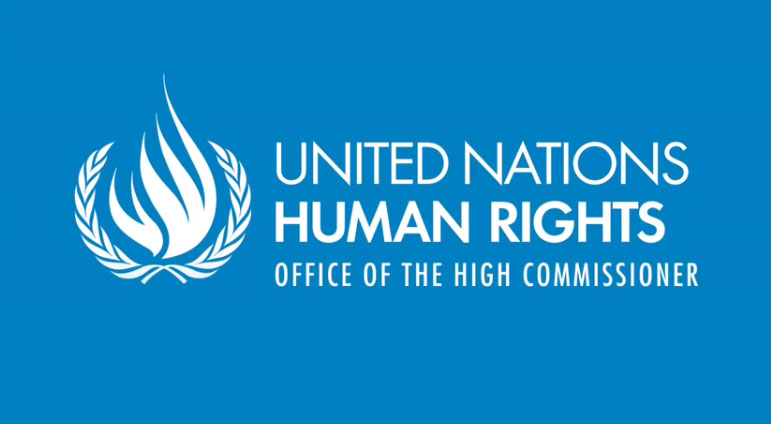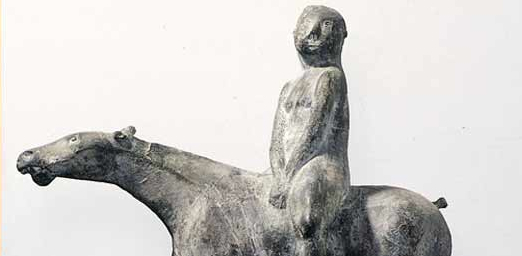IMMIGRANT MOVEMENT INTERNATIONAL (IM International)
During 2012 Tania Bruguera will focus on her long-term project: Immigrant Movement International. The project will be located in Queens, New York, United States.
PARTIDO DEL PUEBLO MIGRANTE (PPM)
From January to July, Immigrant Movement International will open its Mexican Headquarters, the Partido del Pueblo Migrante (PPM), in Mexico City. The project functions as a political party for migrants that intervenes in the Mexican presidential election of 2012.
All public events, regardless of their format, will be closely linked to these projects.
- > January 2012
- This module can only used in a start-article (blue icon)
Art and Social Practice. Master of Fine Arts
from 09.01.2012 – 27.01.2012/ 2:00 – 3:50 p.m.
Portland State university. Department of Art. Oregon, United States
Adjunct Professor
Organized by Jen de los Reyes
ART 581 Topics Seminarmore...Meetings for January
. 9.01.2012
. 13.01.2012
. 18.01.2012
. 27.01.2012
Each year the Open Engagement conference will be organized around a variety of themes related to the interests of the students in the art and social practice MFA program. As a group the students select three outstanding individuals in the field to invite to the conference as featured participants. The three selected individuals will also join the adjunct faculty at Portland State University for that year leading classes and workshops centered on their own practice.
Tania Bruguera as an Adjunct Professor of Art in the winter term of January 9 to March 18, will lead aims to acquaint MFA Social Practice candidates with a broad range of approaches to art and social practice. This course is to be developed directly out of the artist practices and expertise and can manifest in a variety of ways not limited to assignments, writing, assigned readings, reflection and dialogue.
PSU’s Art and Social Practice MFA is composed of a unique combination of individual research, group work, and experiential learning. The program’s blend of critical and professional practice, collaborative social engagement, and transdisciplinary exploration produces an immersive educational environment. Based in Portland, Oregon, the program operates out of Field Work, a downtown storefront classroom and event space. The program’s Flexible Residency model allows for travel and even the ability for students to reside outside of Portland during their course of study. A weekly student organized visiting artist lecture series promotes the understanding of a wide range of approaches and methodologies. An annual conference on socially engaged art practice brings together an international group of artists, curators, scholars and members of the public.
The 90 credit, three-year course operates with a democratic approach that encourages students to shape the direction of their own education, and continually redefine and develop the program as a whole. Students connect their art practice to research in the field through electives and community partnerships, promoting cross disciplinarity. Student work and research is presented annually at the Open Engagement conference leading toward final graduate projects, which are presented in the third and final year of the program.
The program produces an annual intervention event at the Portland Art Museum called Shine a Light, and has exhibited work and created projects for the Whitney Museum of American Art, Bétonsalon in Paris, apexart in New York, and Smack Mellon in Brooklyn among other venues and locations.
The program accepts approximately six students annually. The deadline for applying is February 1st. Interested persons are encouraged to make arrangements to visit the program.
- > February 2012
- This module can only used in a start-article (blue icon)
Art and Social Practice. Master of Fine Arts
from 03.02.2012 – 24.02.2012/ 2:00 – 3:50 p.m.
Portland State university. Department of Art. Oregon, United States
Adjunct Professor
Organized by Jen de los Reyes
ART 581 Topics Seminarmore...Meetings for February
. 3.02.2012
. 10.02.2012
. 17.02.2012
. 24.02.2012
Each year the Open Engagement conference will be organized around a variety of themes related to the interests of the students in the art and social practice MFA program. As a group the students select three outstanding individuals in the field to invite to the conference as featured participants. The three selected individuals will also join the adjunct faculty at Portland State University for that year leading classes and workshops centered on their own practice.
Tania Bruguera as an Adjunct Professor of Art in the winter term of January 9 to March 18, will lead aims to acquaint MFA Social Practice candidates with a broad range of approaches to art and social practice. This course is to be developed directly out of the artist practices and expertise and can manifest in a variety of ways not limited to assignments, writing, assigned readings, reflection and dialogue.
PSU’s Art and Social Practice MFA is composed of a unique combination of individual research, group work, and experiential learning. The program’s blend of critical and professional practice, collaborative social engagement, and transdisciplinary exploration produces an immersive educational environment. Based in Portland, Oregon, the program operates out of Field Work, a downtown storefront classroom and event space. The program’s Flexible Residency model allows for travel and even the ability for students to reside outside of Portland during their course of study. A weekly student organized visiting artist lecture series promotes the understanding of a wide range of approaches and methodologies. An annual conference on socially engaged art practice brings together an international group of artists, curators, scholars and members of the public.
The 90 credit, three-year course operates with a democratic approach that encourages students to shape the direction of their own education, and continually redefine and develop the program as a whole. Students connect their art practice to research in the field through electives and community partnerships, promoting cross disciplinarity. Student work and research is presented annually at the Open Engagement conference leading toward final graduate projects, which are presented in the third and final year of the program.
The program produces an annual intervention event at the Portland Art Museum called Shine a Light, and has exhibited work and created projects for the Whitney Museum of American Art, Bétonsalon in Paris, apexart in New York, and Smack Mellon in Brooklyn among other venues and locations.
The program accepts approximately six students annually. The deadline for applying is February 1st. Interested persons are encouraged to make arrangements to visit the program.
Immigrant Movement International
24.02.2012/ 9:30 a.m. – 12:00 m.
West Hall Meeting Room 503, Level 2. Los Angeles Convention Center
CAA 2012 Annual Conference
Organized by Sandra Skurvida and Jovana Stokicmore...Live Forever: Performance Art in the Changing Museum Culture
. Access PRESS RELEASE
Chairs:
. Sandra Skurvida, Fashion Institute of Technology, State University of New York
. Jovana Stokic, independent scholar
Participants:
. Kathy Battista, Sotheby’s Institute of Art. Tania Bruguera, Immigrant Movement International. Abou Farman, Purchase College, State University of New York. Pablo Helguera, Museum of Modern Art, New YorkThe College Art Association (CAA) will head to the Golden State to celebrate the conclusion of its Centennial year at the 100th Annual Conference, taking place February 22–25, 2012, at the Los Angeles Convention Center.As the preeminent international forum for the visual arts, the CAA conference brings together over 5,000 artists, art historians, students, educators, critics, curators, collectors, librarians, gallerists, and other professionals in the visual arts.
Speakers and panelists will present their recent artistic projects and art-historical research, while others will talk about relevant issues in pedagogy, technology, publishing, and the academic workforce. Historical and contemporary art in Los Angeles will be another important focus.
Censored: Tania Bruguera’s Radical Political Artistic Practice
24.02.2012/ 9:30 a.m. – 12:00 m.
Concourse Meeting Room 408A, Level 2. Los Angeles Convention Center
CAA 2012 Annual Conference
Organized by Beth Rosenblummore...- Breaking Laws in the Name of Art: New Perspectives on Contemporary Latin American Art. Access PRESS RELEASE
Chair:
. Estrellita B. Brodsky, Independent scholar and curator
Participants:
. Idurre Alonso, Museum of Latin American Art
. Tania Bruguera, Immigrant Movement International
. Claudia Calirman, John Jay College, City University of New York
. Jennifer King, Princeton University. Beth Rosenblum, University of California, Los Angeles
The College Art Association (CAA) will head to the Golden State to celebrate the conclusion of its Centennial year at the 100th Annual Conference, taking place February 22–25, 2012, at the Los Angeles Convention Center. As the preeminent international forum for the visual arts, the CAA conference brings together over 5,000 artists, art historians, students, educators, critics, curators, collectors, librarians, gallerists, and other professionals in the visual arts.
Speakers and panelists will present their recent artistic projects and art-historical research, while others will talk about relevant issues in pedagogy, technology, publishing, and the academic workforce. Historical and contemporary art in Los Angeles will be another important focus.
- > March 2012
- This module can only used in a start-article (blue icon)
Art and Social Practice. Master of Fine Arts
from 02.03.2012 – 23.03.2012/ 2:00 – 3:50 p.m.
Portland State university. Department of Art. Oregon, United States
Adjunct Professor
Organized by Jen de los Reyes
ART 581 Topics Seminarmore...Meetings for March
. 2.03.2012
. 9.03.2012
. 16.03.2012
. 23.03.2012
Each year the Open Engagement conference will be organized around a variety of themes related to the interests of the students in the art and social practice MFA program. As a group the students select three outstanding individuals in the field to invite to the conference as featured participants. The three selected individuals will also join the adjunct faculty at Portland State University for that year leading classes and workshops centered on their own practice.
Tania Bruguera as an Adjunct Professor of Art in the winter term of January 9 to March 18, will lead aims to acquaint MFA Social Practice candidates with a broad range of approaches to art and social practice. This course is to be developed directly out of the artist practices and expertise and can manifest in a variety of ways not limited to assignments, writing, assigned readings, reflection and dialogue.
PSU’s Art and Social Practice MFA is composed of a unique combination of individual research, group work, and experiential learning. The program’s blend of critical and professional practice, collaborative social engagement, and transdisciplinary exploration produces an immersive educational environment. Based in Portland, Oregon, the program operates out of Field Work, a downtown storefront classroom and event space. The program’s Flexible Residency model allows for travel and even the ability for students to reside outside of Portland during their course of study. A weekly student organized visiting artist lecture series promotes the understanding of a wide range of approaches and methodologies. An annual conference on socially engaged art practice brings together an international group of artists, curators, scholars and members of the public.
The 90 credit, three-year course operates with a democratic approach that encourages students to shape the direction of their own education, and continually redefine and develop the program as a whole. Students connect their art practice to research in the field through electives and community partnerships, promoting cross disciplinarity. Student work and research is presented annually at the Open Engagement conference leading toward final graduate projects, which are presented in the third and final year of the program.
The program produces an annual intervention event at the Portland Art Museum called Shine a Light, and has exhibited work and created projects for the Whitney Museum of American Art, Bétonsalon in Paris, apexart in New York, and Smack Mellon in Brooklyn among other venues and locations.
The program accepts approximately six students annually. The deadline for applying is February 1st. Interested persons are encouraged to make arrangements to visit the program.
IM International
13.03.2012/ 4:00 p.m.
Universidad Autónoma de la Ciudad de México (UACM), sede San Lorenzo Tezonco. México.
Seminar
Organized by Miguel Cárdenas Orozco (SPEF)more...This seminar is based on provoking a space for a university level academic exchange that tries to forment a theoretical debate and to generate alternative proposals such as philosophical, cultural, artistic and social, in view of the present-day problems of our boarders and contemporary migratory phenomena.
Goldsmith University of London visit IM International
16.03.2011/ from 10:a.m. – 1:00 p.m.
IM International
Master Classes for undergraduate Fine Art students
Organized by Goldsmith Universitymore...Untitled (Labour). Contemporary Art and Immaterial Production
17.03.2011/ 10:00 m.
Tate Britain Clore Auditorium. London, England
Symposium (Skype)
Organized by Tate Britain: Jo Bradshaw and Nora Razianmore...This half-day symposium invites audience members to engage with international artists and academics to investigate current conditions of artistic production in relation to new forms of labour in the emerging global economy. Presenting various perspectives on immaterial labour and its relationship to contemporary art, speakers will address questions around the impact of immaterial production on new aesthetic forms and uses of art, how artists both embody and contest the precarious working conditions of immaterial labour, and art’s potential to serve as immanent critique of capitalism.
Speakers:
Claire Bishop
Tania Bruguera
Pascal Gielen
Stefano Harney
Stewart Martin
Hito Steyerl
Carey Young
Introductions:
Nora Razian and Lauren Rotenberg
Chairs:
TJ Demos and Lauren Rotenberg
Schedule:
14.00- Welcome and introduction14.10- Pascal Gielen
14.25- Stefano Harney
14.40- Hito Steyerl
14.55- Discussion (Panel and Q&A) Chaired by TJ Demos
15.45 – Break
16.00 – Tania Bruguera
16:15 – 10 min question period for Tania
16.25- Claire Bishop
16.40 – Carey Young
16.55- Stewart Martin
17.10 – Discussion (Panel and Q&A) Chaired by Lauren Rotenberg
17.50 – Closing Remarks (TJ Demos)
The Immigrant Manifesto and the Struggle for Social Justice
17.03.2011 /12:00 m.
Department of Sociology. Room W402. CUNY Graduate Center. New York, United States
Left Forum 2012
Organized by Pace Universitymore...The Immigrant Manifesto and the Struggle for Social Justice
Immigration is at the forefront of the increasingly abusive control practices of the US government at diverse levels. The panel will examine what diverse organizations and initiatives are doing to a) contribute to a different type of analysis about immigration, and b) actively contest the abuses deployed by government agencies in the name of the law.
Chair:
Saskia Sassen
Speakers:
Ujju Aggarwal
Tania Bruguera
Donna Nevel
Core Program Symposium
24.03.2012 – 25.03.2012 /
Glassell School of Art Museum of Fine Arts, Houston
Visiting Faculty and Symposium
Organized by Mary Leclèremore...On the Public Function of Art
In 1987 the Dia Foundation sponsored a series of weekly discussions on contemporary art practice and discourse. Organized to establish “an ongoing commitment to intellectual discourse for and with a predominantly visual-art oriented audience,” as the director wrote in his introduction to the published proceedings, the first topic to be addressed was “The Cultural Public Sphere.” The critique of modernism that began with minimal art—which involved, among other things, the work’s engagement with the real space in which it was located—signaled a shift in the way artists viewed not just the object but the subject of art (both maker and viewer). As this critique intensified in a wide range of postwar practices, the replacement of modernism’s universal subject with the culturally constructed subject of postmodernism brought the issue of art’s consumption into sharper focus. The participants in the first Dia discussion, which was titled “The Birth and Death of the Viewer: On the Public Function of Art,” would not have failed to register the allusion to Roland Barthes’s seminal essay or its implications for spectatorship: the birth of the postmodern viewer occurred with the death of the modernist viewer and the concomitant shift in art’s address.
The purpose of this symposium is to address “social art practices”—by which we mean practices that deal with social issues, are intended to critique or subvert the social order, or blur the distinction between social and cultural work—and the historical context within which they function. One task will be to pose art’s critical capacity as a question, since taking it for granted assumes a clear understanding of what a critically engaged art practice means today. What keeps art separate, for the moment, is the name “art” and a connection to the art world, but what gets done in the name of art is slowly losing its connection to the spaces we have traditionally associated with that name and to past art practices. How, then, does art function? What value does it have? What site does it occupy? Has art become the instantiation of interdisciplinarity? If it is intended to have an impact outside the art world, what is at stake aesthetically and ethically? Some critics suggest that art’s autonomy can be harnessed for political or social ends, which means that it’s not artists or artworks that are being instrumentalized so much as the autonomous sphere in which they operate. Does the name art now serve to secure an autonomous sphere rather than the reverse? If it trades on cultural capital, are we left with cultural capital but no culture? And, finally, do we still need the term (contemporary) art and, if so, for what purpose?
Active Audiences: On the Representation and Theory of Spectatorship, Activism, and Public Culture
31.03.2012 /5:00 p.m.
Screening Room. Yerba Buena Art Center (YBCA)
Panel Discussion (Skype)
Organized by Betti-Sue Hertzmore...Active Audiences: On the Representation and Theory of Spectatorship, Activism, and Public Culture
An engaging panel discussion featuring four speakers representing different perspectives on current artistic trends around audiences, spectators, and fans. Academics Henry Jenkins (University of Southern California) and Andrew Weiner (California College of the Arts), with artists Andrea Bowers and Tania Bruguera (via skype), examine issues of spectatorship in contemporary practice in an attempt to understand the individual’s behavior within environments of collective participation.
From an artistic, art historical, and scholarly approach to the performative, mass media, and the internet, the speakers will expand on the politics of artistic interpretation and how those relate to an individual’s social, cultural, and political identity. What is the difference between social citizen and participant viewer when redefining notions of the public beyond spectators, fans, and activists?
- > April 2012
- This module can only used in a start-article (blue icon)
Art and Social Practice. Master of Fine Arts
from 06.04.2012 – 20.04.2012/ 2:00 – 3:50 p.m.
Portland State University. Department of Art. Oregon, United States
Open Engagement conference
Organized by Jen de los Reyes
ART 581 Topics Seminarmore...Meetings for April
. 6.04.2012
. 13.04.2012
. 20.04.2012
Each year the Open Engagement conference will be organized around a variety of themes related to the interests of the students in the art and social practice MFA program. As a group the students select three outstanding individuals in the field to invite to the conference as featured participants. The three selected individuals will also join the adjunct faculty at Portland State University for that year leading classes and workshops centered on their own practice.
Tania Bruguera as an Adjunct Professor of Art in the winter term of January 9 to March 18, will lead aims to acquaint MFA Social Practice candidates with a broad range of approaches to art and social practice. This course is to be developed directly out of the artist practices and expertise and can manifest in a variety of ways not limited to assignments, writing, assigned readings, reflection and dialogue.
PSU’s Art and Social Practice MFA is composed of a unique combination of individual research, group work, and experiential learning. The program’s blend of critical and professional practice, collaborative social engagement, and transdisciplinary exploration produces an immersive educational environment. Based in Portland, Oregon, the program operates out of Field Work, a downtown storefront classroom and event space. The program’s Flexible Residency model allows for travel and even the ability for students to reside outside of Portland during their course of study. A weekly student organized visiting artist lecture series promotes the understanding of a wide range of approaches and methodologies. An annual conference on socially engaged art practice brings together an international group of artists, curators, scholars and members of the public.
The 90 credit, three-year course operates with a democratic approach that encourages students to shape the direction of their own education, and continually redefine and develop the program as a whole. Students connect their art practice to research in the field through electives and community partnerships, promoting cross disciplinarity. Student work and research is presented annually at the Open Engagement conference leading toward final graduate projects, which are presented in the third and final year of the program.
The program produces an annual intervention event at the Portland Art Museum called Shine a Light, and has exhibited work and created projects for the Whitney Museum of American Art, Bétonsalon in Paris, apexart in New York, and Smack Mellon in Brooklyn among other venues and locations.
The program accepts approximately six students annually. The deadline for applying is February 1st. Interested persons are encouraged to make arrangements to visit the program.
Censorship and Freedom of Speech
15.04.2012 /
Round Table
organized by Swedish IAA and Swedish AICAmore...This event is part of World Art Day which is celebrated in many countries all over the world. The day will include speeches and statements by the Swedish Minister of Culture, Lena Adelsohn Liljeroth as other prominent people in the cultural field, artists and art critics.
Moderator:
. Svenska Dagbladet
Cátedra Arte de Conducta (“Behaviour Art School”)
16.04.2012/ 6:30 p.m.
Projektrummet Iaspis, Maria skolgata 83, Stockholm
Lecture
organized by Ulrika Stenmore...The lecture is part of a series of talks at Iaspis by international artist led initiatives setting up frameworks for engagement exceeding individual practice. The emphasis of the series will be on self-organized structures emanating from specific needs and circumstances rather than reproducing conventional formats.
A collaboration with Svenska Konstkritikersamfundet (Swedish AICA).
For more information please contact Iaspis project coordinator Ulrika Sten at e-mail:us@iaspis.se or phone no. +46 (0)8 506 550 00.
Cartografías Corporales
26.04.2012 /from 2:30 p.m. – 5:00 p.m.
TEOR/eTICA. San José, Costa Rica
Panel Discussion
Organized by Tamara Díaz, Inti Guerrero, Santiago Olmomore...Temas Centrales 2
TEOR/éTica, backed by the Museo de Arte y Diseño Contemporáneo (MADC), is organizing the seminar Temas Centrales 2, which will take place in San José, Costa Rica on April 25th, 26th and 27th 2012. Parallel to the programming of lectures and talks, there will be other events, such as exhibitions in TEOR/éTica and at the MADC. (More information about this will be available in March).
With the participation of national, regional and international presenters, Temas Centrales 2 will analyze the region’s current situation from a thematic perspective, touching on specific aspects of the artistic and discursive production of Central America and the Caribbean. The seminar will focus on the complex panorama of the first decade of the 21st century, questioning the concept of region through the following: a dialogue between spaces and institutional models that have become catalysts in their pertaining contexts; conversations amongst artists, curators, critics and cultural agitators that contend a more open situation and a certain level of internationalization; a platform for theorizing about the most prominent artistic practices in the region, such as performance; and a revision of the biennial model, fostered by a discussion between curators of certain “tropical biennials” that have modified the paradigm.
In addition to these proposed themes, there is also an open call for entries entitled Temas centrales: modos de uso. This discussion aims to inquire about those artistic and critical practices that have not had enough articulation or visibility, in such manner that the event itself may serve as a tool for shaping or imagining new “central themes.” With the present call for entries, which does not anticipate any contents beforehand, Temas centrales: modos de uso is conceived as a mechanism for critical intervention that could influence investigative, documental and archival policies in Central America.
IKT Congress: Immigrant Movement International
from 27.04.2012 – 1.05.2012 /
Tel Aviv, Israel
Seminar
Organized by International Association of Curators of Contemporary Artmore...World power, economic models and the role of the citizen have all been in a state of flux in recent years, an era that can be seen as representing post-globalisation. Previously, the globalisation of all aspects of contemporary life benefitted political leaders and multi-national corporations and posed huge threats to personal privacy and choice. The creation of new political structures has been threatened by tribalism and regional tensions, whilst many national and regional economies are heading for financial meltdown.
However, increasingly, there is an ever more visible politics of resistance. Through the development of viral communications systems such as social networking sites questions such as the fight for democracy, and indeed the nature of democracy itself, are brought under the spotlight. We are witnessing large scale protest, whether it is through pro-democracy movements, the ‘Arab Spring’ or worldwide anti-capitalism protests.
There have been enormous changes in artistic practice alongside these developments. The increasing digitisation of the means of production of art and its distribution has enormous potential for finding new audiences for artistic engagement. The concept of ‘narrowcasting’ worldwide as opposed to broadcasting regionally also has enormous potential.
This symposium will explore some of the opportunities created by these exciting developments.
Tania Bruguera is an artist who lives and works in Cuba and the USA
Eyal Danon is a curator and Director of the Israeli Center for Digital Art, Holon.
Jonathan Harris is Professor of Art History and Director of the Centre for Global Futures in Art Design and Media at Winchester School of Art, University of Southampton
Ute Meta Bauer is a Curator and Founding Director of the Programme in Art, Culture and Technology at MIT’s School of Architecture and Planning.
7th Berlin Biennale
from 27.04.2012 – 1.07.2012 /
Auguststraße 69 D-10117. Berlin, Germany
Performance
Organized by KW Institute for Contemporary Art, Curated by Artur Żmijewski with the Associate Curators Joanna Warsza and the Voina Group from Russiamore...The berlin biennale für zeitgenössische kunst e.v. was founded on March 26, 1996 by Klaus Biesenbach, founding director of KW Institute for Contemporary Art, and a group of collectors and patrons of the arts such as Eberhard Mayntz. Eberhard Mayntz has since then been chairman of the association’s board.
The idea of establishing a biennale in Germany was inspired by the Venice Biennale in 1995. Following the demise of aperto – the forum for young contemporary art founded in 1981 – there was much discussion about the need to heighten the profile of contemporary art in Berlin, a fact which undoubtedly accelerated the project’s progress.
The aim of the association is to organise a representative, international exhibition of contemporary art in berlin every two years and to attract attention to less established younger artists. The exhibition’s original and most important institutional partner is the KW Institute for Contemporary Art, which regularly provides the Berlin Biennale with the use its exhibition spaces.
Klaus Biesenbach took the artistic helm of the 1st Berlin Biennale in cooperation with Nancy Spector and Hans Ulrich Obrist. For the 2nd Berlin Biennale in 2001, the baton was passed to Saskia Bos, who is in turn followed by Ute Meta Bauer for the 2004 exhibition. The 4th Berlin Biennale in 2006 was curated by Maurizio Cattelan, Massimiliano Gioni and Ali Subotnick. Adam Szymczyk was chosen for the 5th Berlin Biennale in 2008 who then appointed Elena Filipovic as co-curator. The 6th Berlin Biennale, curated by Kathrin Rhomberg, will take place in 2010.
The Berlin Biennale has established itself as an ‘open space’ that experiments, identifies and critically examines the latest trends in the art world. The innovative character of this “art lab,” which tries and tests the greenest shoots in the art world is to be expanded, with the particular aim of giving young artists the opportunity to introduce themselves to broad sections of the public.
Although the exhibition has an essentially public character, it also has an inner forum in which event organisers, artists, curators, selected critics, cooperation partners, sponsors and promotors committed to the advancement of this association work at shaping the exhibition and its seismographic interpretation of current cultural and social developments.
- > May 2012
- This module can only used in a start-article (blue icon)
La Goutte d’Or, terre d’accueil en Europe-Promenade transnationale
09.05.2012/ 5:30 – 8:30 p.m.
Barbès – Rochechouart. Paris, France
Performancemore...Transeuropa Festival
Transeuropa Festival is a unique transnational festival of culture, arts and politics, taking place in 14 cities all over Europe. It is a collaborative open and public space for the emergence of an alternative Europe.
Transeuropa Festival promotes political and cultural exchange across Europe and collective action for alternative visions on the economic crisis, migrations and democratic participation.
Walk with storytellers through the European multicultural city, featuring contributions by the artist Tania Bruguera!
Registrations by mail: paris@euroalter.com
Featured Artist – Open Engagement
from 18.05.2012 – 20.05.2012 /
Department of Art. Portland State University
Conference
Organized by Jen de los Reyesmore...@John Spiak / @John Muse
. Access PRESS RELEASE
. Access and Download CATALOG
. Access INTEGRAL INTERVIEW
Open Engagement is a free annual conference on socially engaged art. Directed and founded by Jen Delos Reyes and planned in conjunction with Harrell Fletcher and the Art and Social Practice students.
This year’s conference features keynote presenters Tania Bruguera, Shannon Jackson, and Paul Ramirez Jonas. The work by these artists and scholars touch on subjects including politics, economies, education, and representation.
Each year the conference themes are directly related to the current research and inquiry of the students in the Art and Social Practice program at Portland State University. Students and faculty work together to select the featured presenters, who then also become faculty in the Art and Social Practice MFA program. Open Engagement fosters both local, national and international dialogue and partnerships around socially engaged art making.
PRESENTATIONS
. Friday May 18
/POLITICS
3:00 p.m. – 4:30 p.m.
Roberto Tejada and Tania Bruguera
Shattuck Hall Annex
This program will be a conversation about artists, activism, and the role of art in social change. Sharing a Latin perspective and an interest in immigrant communities, the two will discuss Tejada’s work on Chicano culture and the Latin American diaspora as it relates to Bruguera’ Immigrant Movement project. Tejada and Bruguera have been friends since the early 1990s when both lived in Mexico City. Their familiar relationship and overlapping concerns will provide an in-depth discussion of public and socially engaged art in a global-culture context.
. Sunday May 20
/KEYNOTE SPEAKER
1:00 p.m. – 2:30 p.m.
Tania Bruguera
Shattuck Hall Annex
/FINAL PANEL DISCUSSION
6:30 p.m. – 8:30 p.m.
Paul Ramirez Jonaz, Tania Bruguera
Moderated by Jen Delos Reyes with representatives from each theme
YU, 800 SE 10th Ave.
- > June 2012
- This module can only used in a start-article (blue icon)
Untitled (Kassel, 2002)
5.06.2012 – 17.08.2012 /
National Museum of Contemporary Art. Seoul, Korea
Performance
Curated by Stephanie Rosenthalmore...MOVE’s third tour venue
Move – Art and Dance since the 1960’s
Move is the first major exhibition on the interaction between art and movement from the 1960s to the present. The main focus of the exhibition will be on visual artists, dancers and choreographers who create installations that direct the movements of exhibition-goers, turning the viewer into an active participant – even into a dancer.
Earlier exhibitions have primarily explored the relationship between art and dance from the point of view of representation, collaboration and the moving image. Move builds on such shows, but takes a new approach. The exhibition investigates the extent to which the beholder – invited, or tempted, to perform certain movements by the layout and contents of installations – can be choreographed. Thus the look of the exhibition will be dominated by sculptural works and stages filled with activity.
This exhibition sets out to show that choreography may be equally implied by sculptural works and installations. The proposition here is that for an exhibition context, unfamiliar movements – inspired by often familiar-looking objects – unsettle ingrained thought processes and, in doing so, free up the mind. A different slant on one’s own environment may lead to a new awareness, maybe even a new sense of responsibility towards oneself and the world at large.
The ambition is to create a show, which is as participatory and challenging as Allan Kaprow’s Happenings – one that follows Kaprow’s thinking in blurring the boundaries between art and everyday life. By making the visitor aware of the fact that they can be ‘choreographed’ by art installations, the show aims to change the way people think about the relation between art and dance.
Move itself will act as a type of choreography, and will consist of three major sections: installations and performances in the exhibition spaces; a contextual archive in the gallery; a series of performances in different venues in London and Germany.Installations and Performances
This section will focus on participatory artworks and performance pieces from the 1960s to the present day that are directly activated or experienced by the visitor. Visual artists and choreographers from all over the world will also be invited to develop new pieces that deal with matters of choreography and/or to create a choreography that has no set time frame. Furthermore there will be reconstructions or exhibition copies of seminal works from the last fifty years. The idea is to work in each venue in collaboration with local dance schools to activate works of art and
Realize Happenings – both as performers and as researchers, exploring their own body movements and physical responses. At the same time they shall act as mediators and interpreters to discuss and interact with the public. (In London we are collaborating with Laban Contemporary Dance school)
Contextual Archive / Time MachineThe participatory exhibition will be backed up by a contextual and interactive archive that will re-present the history of the longstanding affinity between art and dance over the last half century. Conceived as a ‘time machine’ it will replace the notion of a traditional time line with a series of specially designed islands, rooms and open spaces. The archive will be designed under the premise to ensure this section also activates within the visitor a new bodily awareness – in terms of the ways visitors might explore a subject, view a video or look at an artwork. The archive will be co-curated by André Lepecki, Professor of Performance Studies at NYU.
Performances outside the Gallery
Alongside the exhibition, work will be ideally presented not only in theatres or performance venues, but also throughout the city. In London, performances will take place in the Queen Elizabeth Hall, the Purcell Room, various public spaces inside the Royal Festival Hall and even unexpected locations across the site.
Possible new commissions include works by Alain Buffard, Pablo Bronstein, Boris Charmatz and Xavier le Roy and possible reconstructions will include Allan Kaprow’s ground-breaking 18 Happenings in 6 parts. This part will be co-curated by Nicky Molloy, Head of Dance, Southbank Centre, London.
Southbank Centre is pleased to have been awarded a major grant from Kulturstiftung Des Bundes in support of this exhibition.Artists: Pablo Bronstein, Tania Bruguera, Lygia Clark, Trisha Donnelly, William Forsythe, Simone Forti, Dan Graham, Christian Jankowski, Isaac Julien, Mike Kelley, Xavier Le Roy, La Ribot, Robert Morris, Bruce Nauman, João Penalva, Tino Sehgal, Franz Erhard Walther, and Franz West.
Artway of Thinking
from 18.06.2012 – 23.06.2012 /
The School of the Art Institute of Chicago
Workshop
Organized and Curated by Mary Jane Jacobmore...
- > July 2012
- This module can only used in a start-article (blue icon)
Creating a Profession: Behaviour Art
from 4.07.2012 – 7.07.2012 /
Wide Open School. Hayward Gallery. Southbank Centre
Workshop
Organized by Eimear Martin and Curated by Richard Parrymore...Creating a Profession: Behaviour Art
.Access WIDE OPEN SCHOOL by Ralph Rugoff
.Access WORKSHOP DESCRIPTION
This summer, for one month only, the Hayward Gallery is transforming itself into Wide Open School. An experiment in public learning, Wide Open School offers a programme of ‘classes’ devised and fuelled by the imaginations of leading artists from over 50 different countries.
Intended as a school for people who love active learning but don’t necessarily like being taught, Wide Open School is place where people of all ages and from all walks of life can explore, alongside artists, an unpredictable assortment of subjects.
At the heart of Wide Open School is an energetic atmosphere in which all participants are encouraged to exchange ideas in order to experience different ways of thinking, questioning and solving problems.
Classes are held in the Hayward Gallery, in which artists are developing workshops, group projects, seminars, lectures and/or performances about subjects in which they are passionately interested. That may extend to topics far beyond the methods and scope of conventional education…
Political Timing Specific
from 16.07.2012 – 04.08.2012 /
Alte Saline Hallein
Workshop
Organized by Salzburg International Summer Academymore...Every summer, more than 300 students of all ages come from all over the world to Salzburg to concentrate on artistic practice for 2-3 weeks.
Founded by Oskar Kokoschka in 1953, the Academy is distinguished by the high reputation of the teaching artists and its openness towards all art-lovers, irrespective of nationality, age, gender or cultural background.
Tania Bruguera, participant in documenta 11 and in numerous biennials worldwide, introduces a working method in which the artwork correlates with and comments on current political conditions.
Grant applications will be accepted exclusively online. Closing date: 15 April 2012.
Detailed information here.Closing date for applications for courses is 15 May 2012. If numbers allow, later applications may be considered.
INTERNATIONALE SOMMERAKADEMIE FUER BILDENDE KUNST
Franziskanergasse 5 a, Postfach 18, 5010 Salzburg, Austria
Tel. +43 (0)662 842113, Fax +43 (0)662 849638
e-mail: office@summeracademy.at
www.summeracademy.at
Summer Academy blog:
www.summeracademy.at/blogHead Down
from 19.07.2012 – 7.08.2012 /
The Bronx Museum of the Arts. 1040 Grand Concourse, Bronx, NY 10456
Exhibitionmore...Revolution Not Televised
Inspired by Gil Scott-Heron’s famous song-poem from 1970 that detected a wave of cultural changes imperceptible to the mainstream, Revolution Not Televised features works by contemporary Cuban artists from the Bronx Museum Permanent Collection, with additional works from The Shelley and Donald Rubin Private Collection; Alice Kosmin Private Collection, and Jane Wesman Private Collection.
Inside/Outside: Materialising the Social
21.07.2012/ from 10:30 a.m. to 5:40 p.m.
Tate Modern, The Tanks. Tate Modern, Bankside, London SE1 9TG.
Conferencemore...Part of the series The Tanks: Art in Action
The ritual encounter with an artwork – be it in a museum, gallery, private or public space – has evolved dramatically over the last century: from the contemplation of an object, to immersive installation, performance or participation.
Nicholas Bourriaud’s term ‘relational aesthetics’ referred specifically to work that took social relations as its basic medium. This kind of work usually took place within the walls of the designated art space, and operated in relation to the behavioural rules of that particular mindset (even if working against them). What, then, does it mean when an artist’s work intervenes in the social and political relationships that exist in the real world of everyday life? How can this be brought into the museum, how can it be displayed and how does it relate to the social rituals engendered by the architecture and rules of the specialist space.
Inside/Outside: Materialising the Social will examine the ways in which these codes and boundaries have been tested in the work of a number of different artists in the past decades, and how they have been theorised by key thinkers and writers.
Participants:
. Leo Asemota
. Jelili Atiku
. Claire Bishop
. Tania Bruguera
. Abigail Hunt
. Shannon Jackson
. Suzanne Lacy
. Lin Chi-wei
. Little Movements
. Mark Miller
. Kieren Reed
. Alex Schady
. Susan Sheddan
. Emma Smith
. Dorothea von Hantelmann
Immigrant Movement International
27.07.2012 /
Salzburg International. Summer Academy of Fine Arts.
Panel Discussion
Organized by Hildegund Amanshausermore...- Studio
In it’s event programme, the Salzburg International Summer Academy of Fine Arts (16 July-25 August 2012) is devoted to the theme of the studio; artists, art historians, art theorists and curators are being invited to give lectures and to take part in discussions on the subject.
The studio is the place of artistic production, a highly charged, mystical place where art is created from diverse materials, using specific techniques. Here the artist invents him/herself. Here the production methods and their historical development become visible. All kinds of places can be studios – a particular architectural space, the classic sculpture or painting studio. Often, after the death of an artist – as for example with Constantin BrâncuÈ™i in Paris, Gustinus Ambrosi in the Augarten in Vienna or Edward Krasinski in Warsaw – his studio is preserved or reconstructed at great effort and expense, and opened to the public in order to give an insight into this magical place where the works originated.The studio can also, however, be a factory – as with Richard Serra, who contracted steel plants in the Ruhr district for the manufacture of his sculptures, or Hans Kupelwieser, who produced large-scale sculptures in the VOEST Alpine foundry in Linz. A computer memory, an office, the street, the town, the exhibition, a café – all these and more can serve as an artist’s studio.Since the 1960s, the classic concept of the atelier has been increasingly called in question. In 1971, Daniel Buren proclaimed the abolition of the studio, and John Baldessari’s Post Studio class in CalArts started at around the same time. Site-specificity, art in public space, installation, appropriation, performance, interventions and the like are all developments of the past forty years, signifying a redefinition of artistic work, and consequently of the function of the atelier as a workshop for physical production, at least in its 19th-century form.
1. History of the studio/post-studio
The first section is devoted to the history of the studio from the 17th century to the present day, from Rembrandt’s studio, through Daniel Buren’s abolition of the studio, to the art factory where works are produced for artists worldwide.
Svetlana Alpers, Woutter Davids, Katharina Grosse
2. The city is our studio
Since the 1990s there has been a striking decrease of public space in towns and cities. This is due to increasing privatisation, supervision and commercialisation. Here, then, we have to ask: who does urban public space belong to? What initiatives are taken by artists, what are the tasks of activists, is there a right to civil movement, what new production sites are towns and cities making available to artists…?
Christoph Schäfer, Tanja Boukal, Shaina Anand, Ashok Sukumaran, Niels Boeing
3. Co-operatives, collaborations, political interventions
The question of site, function and structure of the studios entails the question of artistic production. What persons, in what functions or roles, are involved in the creation of a work? What form does the work take?
Work in collectives, interdisciplinary work, dissolution of roles, participation, artistic work as collective knowledge production…
WHW, Tania Bruguera, Kerstin Brätsch, Jörg Franzbecker
4. The global/local studio
This section will examine the condition and the significance of places where art is produced, and the historical development of these places over recent decades. Regional differences will be discussed, as will changes due to globalisation.
Bisi Silva, CCA Lagos, Bojana Pejic, Oafur Eliasson, Jens Hoffmann
5. Diverse spaces
Since the Modern movement, artists have increasingly taken over new spaces for the creation of art – media, landscape, museums, public space. These become the artists’ atelier/post-atelier; works are conceived as site-specific, their content relating directly to their location.
Christian Jankowski, Andrea Fraser, Miwon Kwon, Philip Ursprung
Tania Bruguera: Immigrant Movement International
from 30.07.2012 – 15.08.2012 /
The Tanks at Tate Modern. London, England
Exhibition / Residencemore...The Tanks at Tate Modern: Exhibition
Part of the series The Tanks: Live programmeTania Bruguera will take up residence in The Tanks with her ongoing art project, Immigrant Movement International – an artist-initiated socio-political movement that aims to explore who is defined as an immigrant and the values they share, focusing on the question of what it means to be a citizen of the world. Bruguera will involve artists, members of the public, immigration lawyers, politicians and charitable organisations in a debate around the political representation of immigrants and the conditions they face.
Bruguera is a key player within the fields of performance, interdisciplinary practice and activism. Her work is grounded in the act of ‘doing’ – she calls this ‘behaviour art’ – and her aim is to create art that doesn’t merely describe itself as dealing with politics or society, but that is actually a form of political or social currency, actively addressing cultural power structures rather than representing them. Bruguera is also extremely interested in the role of the museum as an active forum and the role of ‘useful art’ in society at large today.
- > August 2012
- This module can only used in a start-article (blue icon)
Artway of Thinking (III)
from 16.08.2012 – 18.08.2012/ 9:00 a.m. to 5:00 p.m.
The School of the Art Institute of Chicago (SAIC) Chicago, United States.
Workshop
Organized and Curated by Mary Jane Jacobmore...
- > September 2012
- This module can only used in a start-article (blue icon)
Autobiography (inside Cuba)
from 15.09.2012 – 11.11.2012 /11:00 a.m. – 5:00 p.m.
Kunsthaus Baselland. Switzerland
Exhibition
Curated by Nadia Schneider Willenmore...Catch Phrases and the Powers of Language · How power and identity are dealt with in language
The powerful have the final say, as the saying goes, or in other words: “One who has the language has the final say.” The struggle for power is often a combat for the sovereignty of interpretation as well as an attempt to silence the opposition through argument or violence.
Despite, or perhaps because language is a non-ideological system of signs and also the most important code of social communication, it is exploited by politicians and the media like no other communication system. The exhibition Catch Phrases and the Powers of Language showcases a group of international artists who addresses the complex relationships and interactions between language and power: language in the service of power, language as power (medium), but also the power of language itself. Here we are interested in how language is used in the context of political discourse – from the enforcement of its own scope of interpretation through persuasive strategies in democratic systems, to the manner in which the propaganda and censorship machinery of totalitarian regimes exploit the manipulative potential of language. Furthermore Catch Phrases examines how different languages represent a diversity of symbolic assets and thus define the social status of the speaker, politically and personally. For nothing reveals so much about our origin, our social affiliation and our educational background as our language(s) and the way we speak it/them. Just as it is advantageous to speak the “right” language in a certain context, the opposite may be a factor of social or political discrimination. This, in turn, points to the existing imbalance of power between different language communities. In this context, we the exhibition unveils the relationship between one’s mother tongue and a foreign language(s), especially in terms of their constitutive role in the formation of a cultural and personal identity, as well as regarding the disfunctionality of translation with when it comes to intercultural understanding.
- > October 2012
- This module can only used in a start-article (blue icon)
Made in India
from 6.10.2012 – 2.01.2013 /
Tate St. Ives, The Apse. London, England.
Exhibition
Curated by Sara Matson and Miguel Amadomore...The Far and The Near: Replaying Art in St Ives exhibition
This exhibition reinvestigates the histories of the St Ives colony in the contexts of international modernism and contemporary practice. Examining the changing legacies of British and international modernism, with a particular emphasis on artists associated with the colony in St Ives, the exhibition will present new perspectives on St Ives as a space for art, locating them within a contemporary culture that is still profoundly influenced by many of the innovations and ideologies of the time.
Drawing on important and recently acquired works from the Tate collection, as well as archival material, this exhibition will reposition many of the artists and works associated with St Ives in a contemporary context in which they find new resonances and relevance. Looking at modernist artistic practice and our relationship to this fertile period of British art, the exhibition includes new acquisitions of both contemporary and modern works, giving some familiar historic connections alongside some alternative contemporary relationships.
Works are juxtaposed in challenging, often unexpected ways, addressing an unstable relationship between location and identity. As the art of post-war St Ives is still so resonantly bound to our view of the place, The Far and The Near offers an alternative perspective of this twenty-first century Cornish resort.
States and Markets
13.10.2012/ 10:30 a.m. – 1:00 p.m.
Goldcorp Centre for the Arts. Simon Fraser University. Vancouver, Canada
LectureOrganized by Filip, The Pacific Association of Artist Run Centres and The Artist-Run Centres and Collectives Conferencemore...Andrea Creamer
Session Five: States and Markets
. Access VIDEO
As a result of socio- economic shifts occasioned by neoliberalism and global- ization over the last twenty years, public funding for the arts has increasingly come to mean competition among, and compromise for, artists who receive state support. Although a relatively new phenomena in North America and Europe, artists from China, Cuba, and former East Europe know firsthand the limitations of government sponsorship and the concessions made in exchange for cultural subsi- dies. This session will carry on the discussions initiated dur- ing the first night’s debate to consider, on both theoretical and practical terms, artist-run institutions entangled by art and state interests.
Moderator
Am JohalParticipants
Matei Bejenaru
Vector
Tania Bruguera
Corinn Gerber
Art Metropole and Passenger Books
Gregory Sholette
Queens College, CUNY, and Institute for Wishful Thinking
Pauline J. YaoInstitutions by Artists: Should artists professionalize?
13.10.2012/ 7:00 p.m.
Goldcorp Centre for the Arts, Simon Fraser University. Vancouver, Canada.
Debate
Organized by the Pacific Association of Artist Run Centres and Fillip Magazinemore...Allison Collins
As artists have taken on the creation of artist-run organizations or have turned themselves or their practices into institutions, their roles have expanded, taking on the work of curator, administrator, critic, educator, publicist, and so forth. While the polyvalence of contemporary artists has enriched institutions with resources and support, any reciprocity remains subject to debate. The professionalization of the artist, arising as a consequence of artist-run institution building and the blurring of professional roles inherent in such activity, may limit artistic potential in that artists take on increased administrative and curatorial responsibilities, among others, at the opportunity cost of artistic production. In the second debate of the convention, presenters will deliberate on the many roles of the contemporary artist, making the case for and against his or her professionalization.
Team A (for)
. Julia Bryan-Wilson
. Jeff Derksen
. Candice Hopkins
Team B (against)
. Tania Bruguera
. Sam Gould
. Claire Tancons
Tania Bruguera
15.10.212/ 6:00 p.m. – 7:30 p.m.
The Art Institute of Chicago, Rubloff Auditorium. Chicago, United States.
Guest speakerOrganized by SAICmore...Tania Bruguera: Distinguished Alumni Lecture Series
. Access PODCAST
SAIC alumna Tania Bruguera (MFA 2001) is one of the leading political and performance artists of her generation. Her work researches ways in which art can be applied to everyday political life, creating a public forum to debate ideas in a state of contradiction, focusing on the transformation of the “viewer” into one of “citizenry.” Bruguera’s terms “arte de conducta” (conduct/behavior art) and “arte útil” (useful art) define her practice. In 2010, Bruguera launched Immigrant Movement International, a five-year project that helps define the immigrant as a unique, new global citizen in a postnational world and tests the concept of “useful art,” by artists actively implementing the merging of art into society’s urgent social, political, and scientific issues.
Artist in an inescapable political context: Cuba
26.10.2012/ 12:15 m.
The Opera House. Oslo, Norway
Lecture
On Stage – Session 7
Organized by Fritt Ord and Freemusemore...All that is Banned is Desired –A World Conference on Artistic Freedom of Expression-
. Access VIDEO
. Access and Download CONFERENCE PROGRAM
Over the two days of ‘All That is Banned is Desired’ – A World Conference on Artistic Freedom of Expression, artists, journalists, activists, scholars, curators and others will respond to censorship of the arts around the world.
We will discuss and investigate why, where, and how artistic expressions is condemned, banned and persecuted. In particular, we will focus on the three principal agents of censorship – religion, state and market.
Although the effects of censorship can be easily identified in cases where artists are imprisoned or killed, the social and economic repercussions of censorship are more difficult to measure. A culture deprived of its artistic creations and cultural heritage clearly loses an important link to its history and identity.
Cultural artefacts carry with them the power to influence the minds and motivations of the masses and with it, the power to divert people from an awareness of and compliance with the normative behaviours of a society, as dictated by religious and political ideologies. The control of culture is thus a major concern for both clerics and politicians.
But where religion and state decline in importance in the control of artistic expression, another censor appears quite ready to step in to fill the censorial void – namely the market. And there is no guarantee that it will prove to be any less censorious than its religious and political predecessors.
Censorship is characterized by the contradictory fact that by imposing limits it provokes reactions to those limits. By limiting freedom it helps fuels the desire for even greater freedom, as the title of the conference evokes: ‘All that is banned is desired’.
In many ways, the power of nation-states to carry out censorship is being undermined as global communication networks expand and international trade barriers crumble. This means that it is becoming increasingly difficult for governments to control what their citizens have access to; however, history suggests that nation-states will be reluctant to relinquish control.
Conference participants will be invited to debate these and other concerns in relation to specific cases. These cases will be drawn from a wide range of conditions and contexts and will include some that are well known and others that are known to only a few. In addition to deepening our understanding of the fundamental propositions of freedom of expression, the conference will also work toward proposals for monitoring censorship globally, and organising to advance freedom of expression for artists around the world.
- > November 2012
- This module can only used in a start-article (blue icon)
The Burden of Guilt (El Peso de la Culpa) III
10.10.2012/ 5:00 p.m.
MAC (Costa Rican Art Museum) San José, Costa Rica
Humanitarian Auction
Curated by Octavio Zayamore...Valoarte-International Art Exhibition.
ART + MARKET + SOCIAL WORK
Valoarte is the biggest art expo-sale in the country and it is known as one of the most important referents in the region. The event is held since 2003 and is recognized by the Ministry of Culture since its first edition. The sample counts with more than 250 art pieces. The artists represent approximately 20 different nationalities with diverse proposals in visual arts such as: video, sculpture, installation, objects, paintings, photography, etc. 100% of the profit is destined to Hogar Siembra and represents 70% of it’s yearly income.
Immigrant Movement International
19.11.2012/ 4:30 p.m.
219 Aaron Burr Hall. Princeton University. United States.
LectureOrganized by Rachel Pricemore...Latin American Studies Courses
Artist Tania Bruguera will speak on Immigrant Movement International, her Corona Queens-based artwork and movement that functions as a think-tank for immigrant issues, fights for the advancement o immigrant rights and advocates for progressive immigration policies through political and artistic actions.
In conversation: Julie Morgan and Tania Bruguera
28.11.2012/ 3:00 p.m. – 3:30 p.m.
University of Wales. Newport, England
Symposium
Organized by Artes Mundi & European Centre for Photographic Researchmore...Wales News Service
Social Contours: Art at the Borders
Artes Mundi recognises the importance of selecting diverse, thought provoking work around questions of place and community while also being aware of its shifting and complex relationship to the art market. In an increasingly globalised world where boundaries or borders are being configured, erased and redefined, artists can offer a vital and unexpected commentary on such processes. Here the values associated with subjectivity and identity, mass and high culture, remembering and forgetting, are often blurred and contested to become sites of resistance in pursuit of more expansive accounts of social and political life.
. Access PROGRAM
Selectors
. Ben Borthwick (Artistic Director of Artes Mundi 5)
. Sofia Hernandez Chong Cuy (Mercosul Biennial, Pôrto Alegre and Colección Patricia Phelps de Cisneros, Caracas and New York)
. Anders Kreuger (MHKA, Antwerp)
Participants
. Miriam Bäckström
. Tania Bruguera
. Phil Collins
. Sheela Gowda
. Teresa Margolles
. Darius Mikšys
. Apolonija ŠušteršiÄ
- > December 2012
- This module can only used in a start-article (blue icon)
VIVA | Performance Lab’s Workshop
from 03.12.2012 – 07.12.2012/ 9:30 – 6:00 p.m.
Historic City Centre of Cosenza. Calabria, Italy.
Workshop
Conducted by Tania Bruguera and Cristiana Perrellamore...Public selection for the participants in a performance workshop with Tania Bruguera
SUBMISSION DEADLINE 5 November 2012
WORKSHOP DATES 1 – 9 December 2012VIVA | Performance Lab brings in Cosenza some of the main exponents of the contemporary performance in a two days festival to be held in the city centre. The festival, curated by Tania Bruguera and Cristiana Perrella, will be preceded by an intensive five-day workshop.
At the end of the workshop, the artists who have participated shalltake part in the festival with individual performance projects that shall be discussed during the laboratory work with Tania Bruguera.
The workshop is open to 8 young artists of all nationalities, selected among the applications by a commission on the basis of the quality of the applications.
The selected participants will be involved in seminars with guest lecturers as well as in daily workshop activity with Tania Bruguera.
Deadline: 12 am of Monday, November 5th 2012
Attendance to the workshop is free, while travel costs and accommodation expenses in Cosenza are to be covered by the participants. A 600 Euros contribution to the expenses, insurance and to the performance’s production costs will be paid by the organization to each participant.
. Access OPEN CALL
Selected artists
. MaraM (Mara Maglione)
. Valentina Vetturi
. Alessandro Fonte + Shawnette Poe
. Luca Pucci
. Cheryl Pope
. Franco Ariaudo
. Ioana Paun
. Diego CibellThe Right to Artistic Freedom
from 04.12.2012 – 05.12.2012/ 9:00 a.m. – 6:30 p.m.
Palais des Nations, The United Nations Office. Geneva, Switzerland.
Independent Expert in the field of cultural rights.
Organized by Farida Shaheed and Mylène Bidaultmore...The Human Rights Council, through resolution 10/23 decided to establish, for a period of three years, a new special procedure entitled “independent expert in the field of cultural rights”. The mandate was extended in 2012 for a period of three years, conferring to the current mandate holder the status of Special Rapporteur in the field of cultural rights (resolution 19/6).
. Access OFFICIAL INVITATION LETTER
. Access and Download QUESTIONNAIRE ON THE RIGHT TO ARTISTIC FREEDOM
The United Nations special rapporteur in the field of cultural rights has sent a questionnaire to all member states asking them to report on legislations and practices related to artistic freedom and censorship. Freemuse’s Programme Manager has been attached as a consultant for the world organization’s upcoming study and report on conditions and right to artistic freedom of expression.
Based on the background report as well as a forthcoming experts meeting and an open consultation in Geneva, the UN Special Rapporteur Ms. Farida Shaheed will submit her final report to the UN Human Rights Council in June 2013.
Public consultation on the right to artistic freedom
06.12.2012/ 10:00 a.m. – 1:00 p.m.
Palais des Nations, The United Nations Office (Room XXI). Geneva, Switzerland.
Speech
Organized by Farida Shaheed and Mylène Bidault
1st meeting on Artistic Freedom and Cultural Rightsmore.... Access PUBLIC INVITATION
. Access ARTISTIC FREEDOM MANIFESTO by Tania Bruguera
This second part of the first meeting on Artistic Freedom and Cultural Rights will be open to the participation of, Inter alia, representatives of United Nations Member States, International agencies, regional organizations, non-governmental organizations and national human rights institutions. The audience will be briefed about the content of the expert’s discussion, and given the opportunity to ask questions and make additional comments.
VIVA | Performance Lab
from 08.12.2012 – 09.12.2012/
City Center of Cosenza. Calabria, Italy
Festival and Performance
In collaboration with Fondazione MAXXI the Museum of XXI Century art in Rome, Municipality of Cosenza and by the University of Calabria.
Curated by Tania Bruguera and Cristiana Perrellamore...VIVA Performance Lab is the festival devoted to performance and born out of the collaboration between the municipality of Cosenza, MAXXI and the University of Calabria, which will animate the historic city centre of Cosenza on 8 and 9 December.
Conceived by MAXXI Arte and curated by the artist Tania Bruguera and the curator and critic Cristiana Perrella, there are diverse facets to the event: educational and training activities in the local area, a workshop for young artists (3-7 December) and the festival itself (8-9 December).
Participants
. Tania Bruguera
. Minerva Cuevas
. Francesca Grilli
. Núria Güell
. Aníbal López
. Yoshua Okón
. Adrian Paci
. Cesare Pietroiusti
Tatlin’s Whisper #5
from 15.12.2012 – 23.02.2013/ 10.00a.m. – 1:00p.m.__3:00p.m. – 7:00 p.m. (Monday closed)
MAN-Museo d’arte della Provincia di Nuoro. Sardinia, Italy.
Exhibition
Curated by Lorenzo Giusti and Alberto Salvadorimore...Partido Revolucionario Cubano
18.12.2012 /12:00m. – 1:00 p.m.
CIFO (Cisneros Fontanals Art Foundation). Miami, United States
Performance
Curated by Moacir dos Anjos and José Rocamore.... Access PERFORMANCE IMAGES
On December 18th (National Migrants Day) and in commemoration of Jose Marti’s establishment of the Partido Revolucionario Cubano in Key West, Florida, Tania will open up and present her research challenging the meaning of the word “revolución”. This encounter will take place in Key West, the same place where Marti wrote his first draft for the foundation of the Partido Revolucionario.
Date: December 18th
Time: 12:00 pm – 1:00 pm
Place: Crowne Plaza “La Concha” Key West
430 Duval St, Key West, FL 33040

